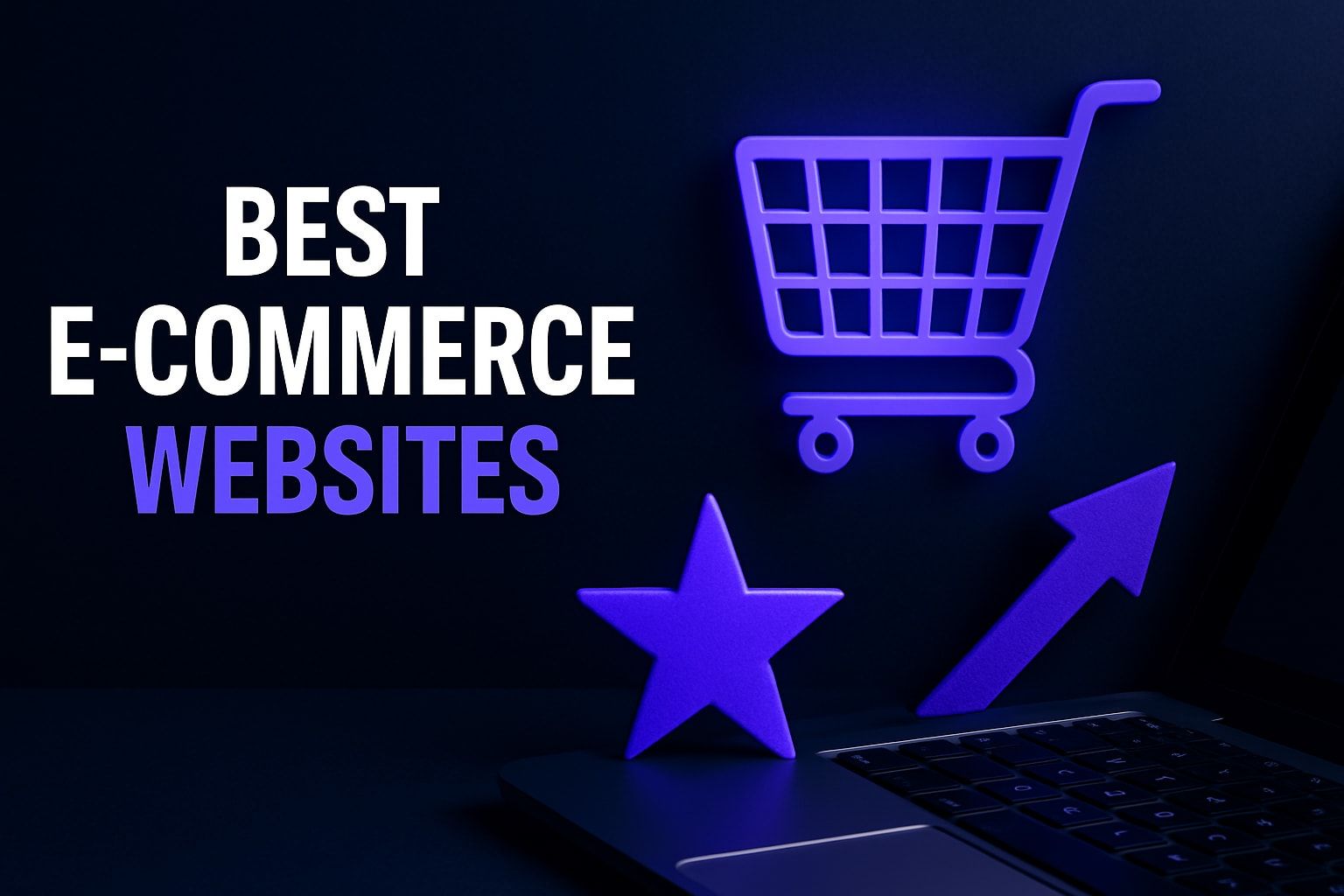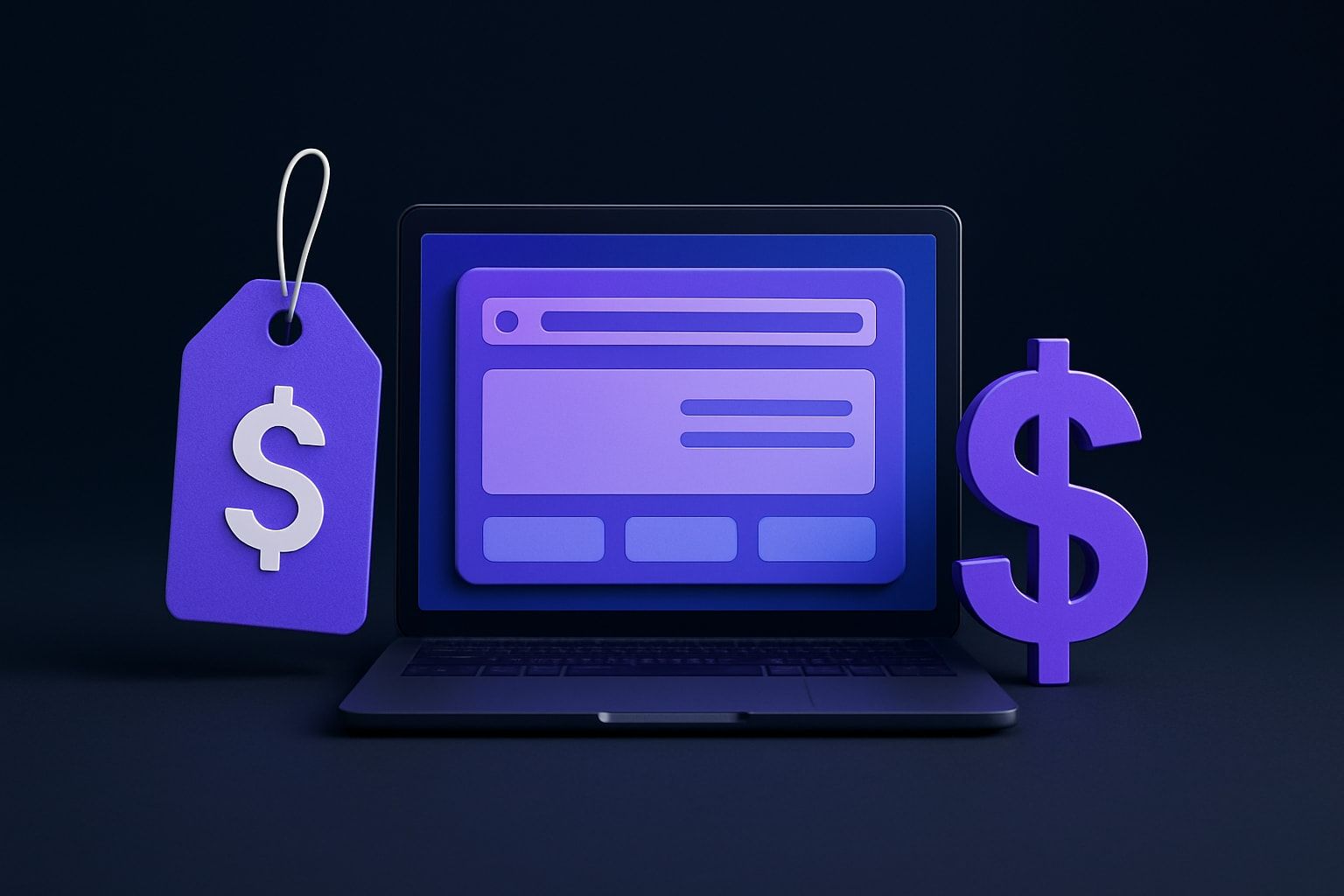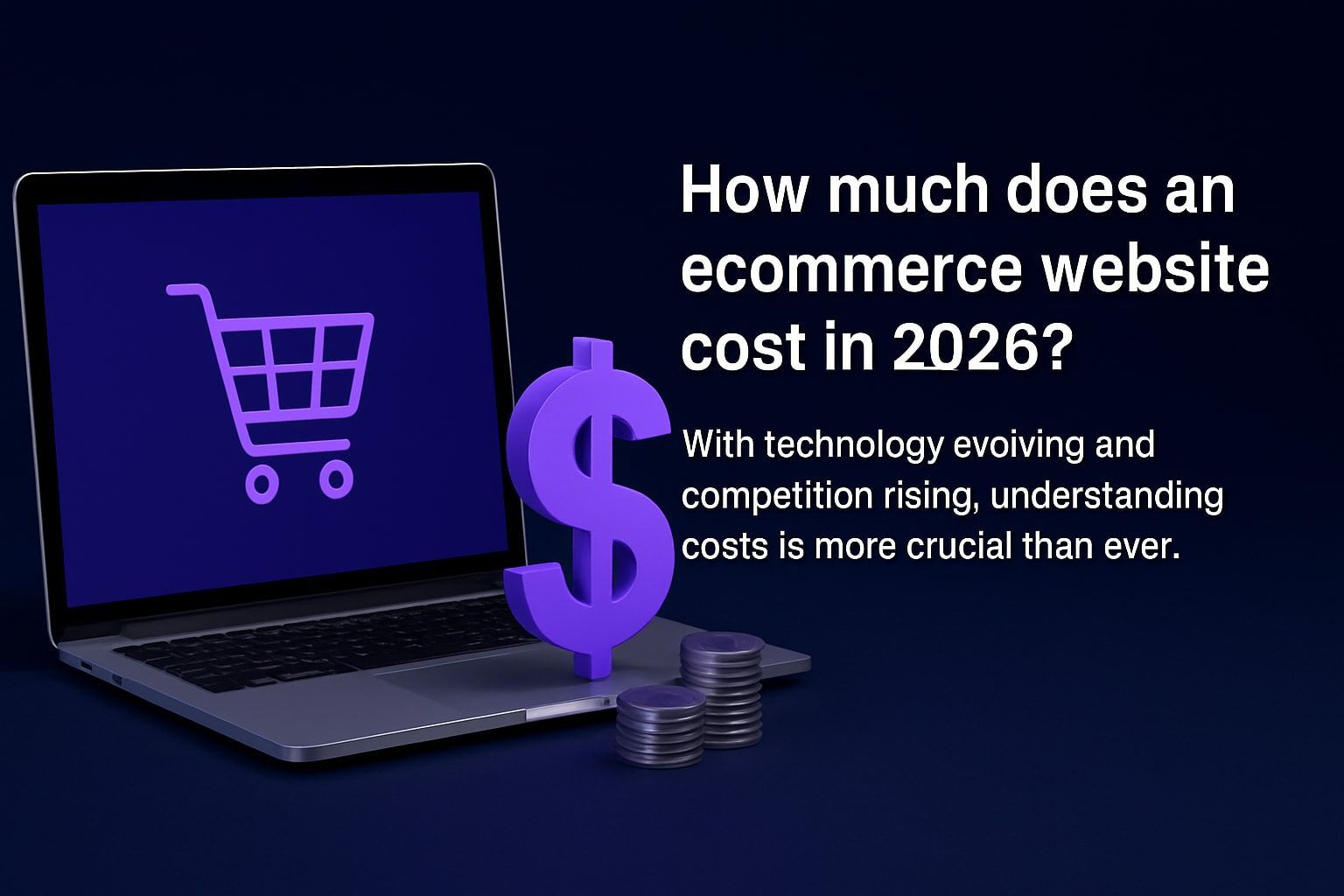The Ultimate Guide to Using a Website for Beginners (2025)
Imagine launching your very first website in 2025. It’s faster, easier, and more impactful than ever before. As the digital world evolves at lightning speed, having a website has become essential for personal branding, business growth, and connecting with your community.
But for many beginners, using a website can feel intimidating. Technical jargon, endless design options, and concerns about privacy or security might leave you unsure where to start.
This guide is here to help. We break down every step, demystifying the process with the latest insights and practical tips. Whether you want to showcase your portfolio, start a blog, or launch an online store, you’ll learn how to use a website confidently and effectively.
Ready to get started? In this article, you’ll discover what a website is, how to navigate and interact with them, must-know features, safety tips, and strategies to maximize your online presence.
Understanding What a Website Is
The digital landscape in 2025 is shaped by the way we interact with websites. For anyone interested in using a website, understanding its foundations is the first step. Modern websites serve as the backbone of digital identity, business, and communication.

Definition and Purpose of a Website
A website in 2025 is a collection of web pages connected by a unique domain, accessible worldwide. It acts as a digital space for sharing information, promoting businesses, or building communities.
Websites come in two main forms: static, where content stays the same, and dynamic, where users can interact and content updates in real time. Examples include personal blogs, business landing pages, online stores, and creative portfolios.
With over 1.9 billion websites online as of 2024, using a website is essential for anyone wanting to connect, learn, or grow. Platforms like the AI-powered website builder have made creating and using a website more accessible, offering tools that cater to beginners and experts alike.
Types of Websites and Their Uses
Websites have evolved into several categories, each serving a unique purpose. These include business websites, eCommerce platforms, personal blogs, portfolios, forums, and SaaS solutions.
For instance, Shopify powers online stores, while Behance is popular for creative portfolios. The design and features of a website depend on its main goal—selling products, sharing ideas, or building communities.
Trends like micro-SaaS and niche forums are on the rise, reflecting how using a website is becoming more specialized. In 2024, 71% of businesses had a website, highlighting its importance for success.
| Website Type | Example | Main Use |
|---|---|---|
| Business | Corporate site | Branding, info |
| eCommerce | Shopify store | Online sales |
| Portfolio | Behance | Showcasing work |
| Forum | Community support | |
| SaaS | Trello | Service delivery |
Key Components of a Modern Website
Every modern website shares a few core elements. These include the homepage, navigation menu, content pages, footer, and contact forms. Responsive design ensures seamless browsing on both computers and mobile devices.
Websites now integrate multimedia like videos, images, and interactive tools such as chatbots or AI features. SEO basics—meta tags, alt text, and sitemaps—help users find what they need when using a website.
Over 60% of website traffic comes from mobile devices, so mobile-friendly design is critical. Well-designed sites make it easy to navigate and interact, no matter the device.
- Homepage for first impressions
- Navigation menu for structure
- Multimedia for engagement
- Contact forms for communication
- Responsive layouts for all screens
How Websites Work Behind the Scenes
Behind every website are domains, hosting services, and web servers. Domains are the addresses users type in, while hosting stores the website's files. The front-end is what visitors see and interact with, while the back-end manages data and processes.
Content management systems (CMS) like WordPress or Wix simplify using a website by allowing content updates without coding knowledge. Security is vital—HTTPS and SSL encryption protect user data.
In fact, 95% of first-page Google results are HTTPS-secured. Understanding these basics empowers users to troubleshoot common issues and communicate clearly with developers, making using a website a confident experience.
Navigating and Interacting with Websites
Navigating and interacting online is easier than ever, but it still requires a bit of know-how. If you’re just starting out, using a website can feel like entering a new city—you need a map, clear signs, and a sense of direction. In this section, you’ll learn practical skills for moving around websites, engaging with content, and making the most of every feature.
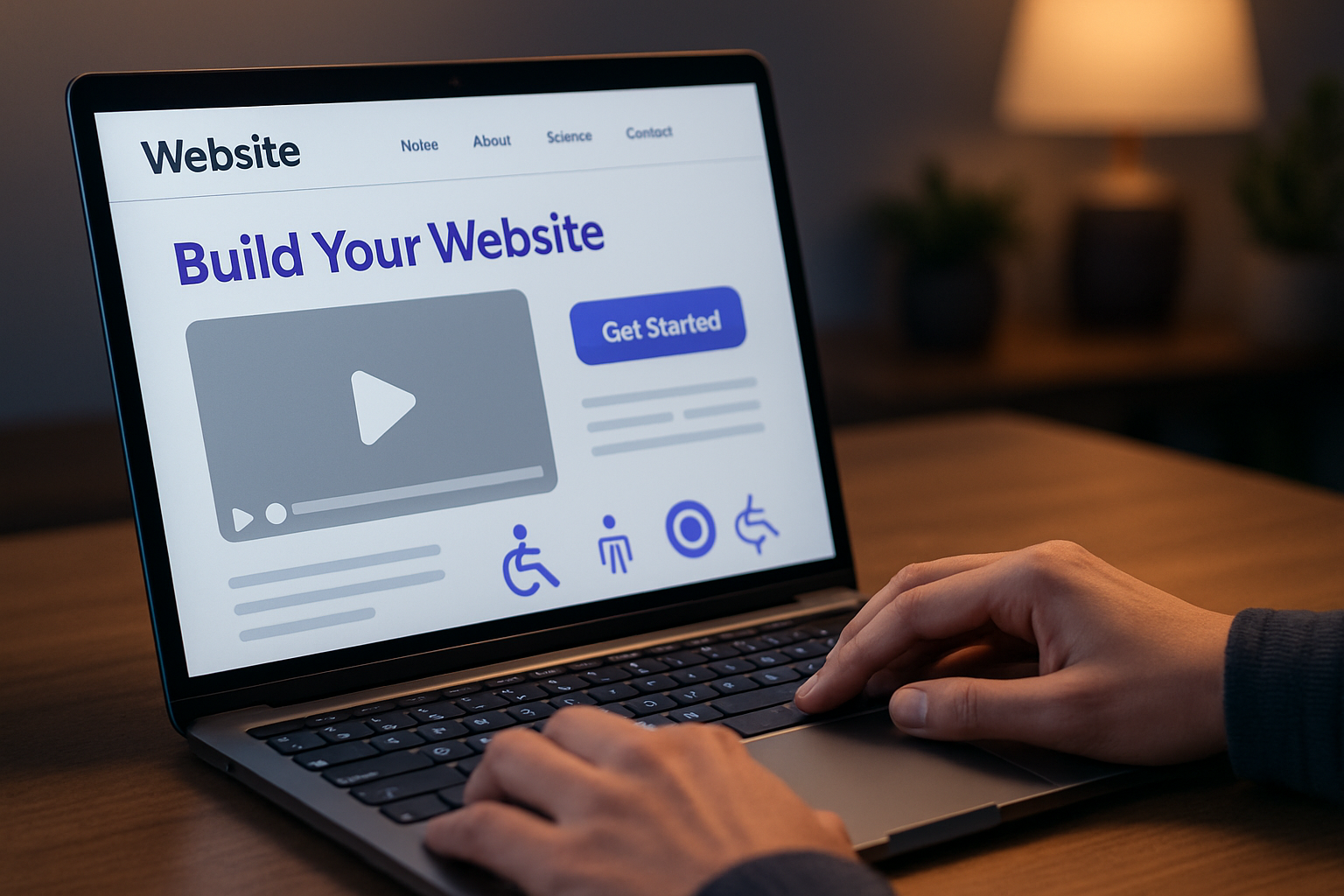
Basic Website Navigation Skills
Good navigation is the backbone of using a website successfully. Menus typically sit at the top or side, offering links to main sections like Home, About, or Shop. Clicking these links moves you around the site, while search bars help you find specific pages or products quickly.
Breadcrumbs—those little links showing where you are—make it easy to backtrack without getting lost. Accessibility features such as keyboard navigation and screen reader compatibility ensure everyone can participate. However, 98% of homepages still have some accessibility issues, so patience is key.
For more practical tips on organizing and Website Navigation Best Practices that enhance your experience, check out this expert resource. Mastering navigation means you can confidently explore any site, making using a website a smoother journey.
Forms, Buttons, and Interactive Elements
Interacting with forms and buttons is a daily part of using a website. Forms let you sign up, contact support, or make purchases. Always check for secure URLs (look for HTTPS) before entering personal info.
Multi-step forms are common in online stores, guiding you through checkout to reduce confusion. Buttons like "Submit," "Buy Now," or "Learn More" trigger different actions. Well-designed call-to-action (CTA) buttons can boost a site's effectiveness by up to 80%.
When using a website, remember to avoid suspicious pop-ups or odd-looking forms. Trustworthy sites use clear labels and provide feedback, so you know your information was received.
Multimedia and Embedded Content
Modern websites are filled with engaging multimedia. You’ll often find videos, image galleries, or audio tracks that bring content to life. Embedded maps, social media feeds, and widgets offer extra interactivity without leaving the site.
For example, many tutorials use YouTube video embeds, making learning visual and hands-on. Pages with videos can increase visitor dwell time by 2.6 times, keeping users engaged longer.
If you notice slow loading times when using a website, it may be due to large images or unoptimized videos. Look for play, pause, and fullscreen buttons to control your experience.
Personalization and User Accounts
Creating an account personalizes your experience when using a website. After logging in, you might see saved preferences, order history, or custom dashboards—especially on eLearning or shopping platforms.
Personalization means content adapts to your needs, but it also means sharing some data. Always review what information a site collects and why. Trustworthy sites are transparent about privacy and let you manage your settings.
If you forget your password, most sites offer easy recovery steps. Using a website with an account can make tasks quicker and more convenient, but always value your privacy.
Accessibility and Multilingual Features
Websites today strive to be inclusive. Language switchers and translation tools, such as Google Translate, make using a website possible for speakers of many languages. Accessibility features like alt text for images, ARIA labels, and high-contrast modes help users with disabilities.
Did you know 15% of the world’s population lives with a disability? That’s why accessible design is so important. Look for icons or menu options that enable accessibility modes.
Inclusivity broadens a site’s reach and ensures everyone can benefit from using a website, no matter their language or ability.
Essential Website Features Every Beginner Should Know
Understanding the core features of modern websites is crucial for anyone using a website in 2025. Whether you're browsing for information, shopping online, or building your own site, these essentials will help you navigate confidently and get the most value from your online experience.
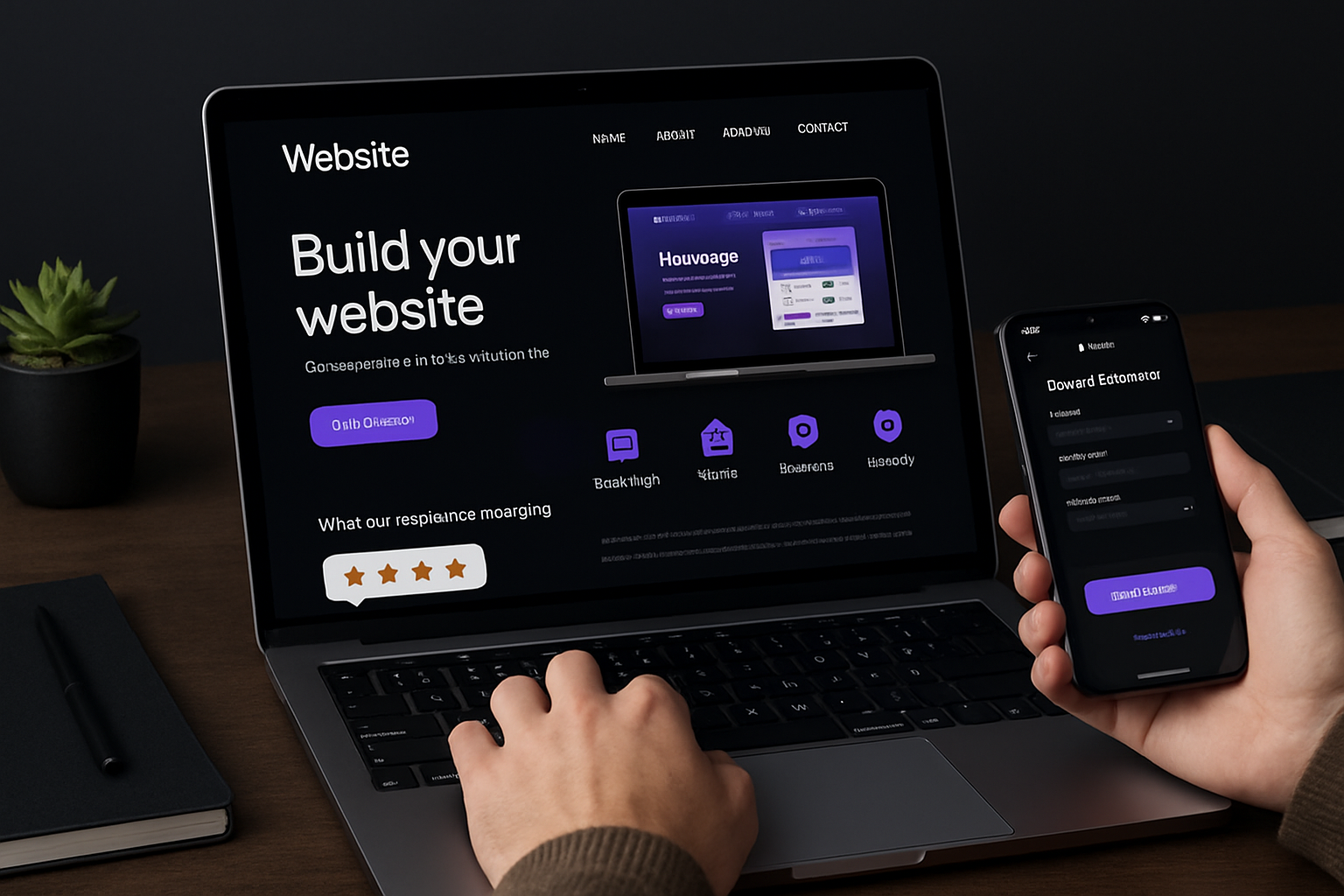
Homepages and Landing Pages
The homepage is the main entry point when using a website, designed to make a strong first impression. It typically features a hero section, clear navigation links, and a value proposition that tells visitors what the site offers. Landing pages, on the other hand, are focused pages designed for specific actions, like signing up or making a purchase.
A well-structured homepage welcomes users and guides them to important sections. Landing pages often remove distractions and highlight a single call-to-action, which is why they convert at an average rate of 2.35%. For beginners, choosing a clean layout and clear messaging is key to making users feel at home when using a website.
About, Contact, and Service Pages
About pages build trust by sharing your story, mission, and team. When using a website, visitors often check the About Us section to decide if they can trust the people or business behind it. Service or product pages should clearly outline what’s offered, making it easy for users to understand benefits and features.
Contact pages are critical. Include forms, maps, and social media links to make connecting simple. Automated responses can improve user experience. Remember, 44% of visitors will leave if they can't find contact information, so always make it visible when using a website.
Blogs and Resource Sections
Blogs are the heartbeat of many sites, driving traffic and engagement. When using a website, regularly updated blogs and resource sections (like FAQs or guides) provide value and answer common questions. They also boost SEO, helping new visitors discover your content through search engines.
Resource sections can include whitepapers, tutorials, or downloadable guides. Businesses with blogs see 55% more visitors. For beginners, starting a blog or resource page is a great way to establish authority and keep users coming back when using a website.
E-commerce and Online Stores
Online stores combine product pages, shopping carts, and secure checkout flows to create a seamless buying experience. When using a website to shop, look for clear product details, reviews, and easy-to-navigate carts. Security is vital—reputable sites use encrypted payment gateways.
Global eCommerce sales soared to $6.3 trillion in 2024. To understand key features and best practices, check out these E-commerce website features. Smooth, intuitive design helps users complete purchases quickly, making using a website for online shopping both safe and enjoyable.
User Reviews, Testimonials, and Social Proof
Displaying user reviews and testimonials builds credibility and trust. When using a website, most people look for star ratings, customer feedback, or case studies before making decisions. Social proof reassures visitors that others have had positive experiences.
For products, star ratings and testimonials on landing pages can boost conversions. 93% of consumers read reviews before buying. Beginners should encourage satisfied users to leave honest feedback, and highlight these reviews prominently when using a website.
Security Features and Privacy Policies
Security is non-negotiable when using a website. Look for SSL certificates (the padlock icon in your browser), which ensure encrypted data transmission. Privacy policies and terms of service pages explain how your information is collected and used.
Examples include GDPR compliance banners and cookie consent notices. With 64% of users trusting secure sites more, always check for these features. Regularly updating and reviewing security practices keeps both your data and reputation safe when using a website.
How to Use a Website Effectively: Step-by-Step for Beginners
Getting started with using a website can seem intimidating, but breaking it down into manageable steps makes the process clear and approachable. Here’s a practical guide to help you navigate, customize, and stay safe while building confidence online.
Step 1: Finding and Choosing the Right Website
The first step in using a website is knowing how to discover the right one for your needs. Search engines like Google or Bing are your starting point—type in relevant keywords and explore the top results.
Check for credibility before diving in. Look for signs like HTTPS (a padlock symbol in the address bar), user reviews, and up-to-date content. Reliable educational sites often end in .edu, while commercial ones use .com or .store.
If a site loads slowly or looks outdated, it might not be the best choice. Remember, 53% of users abandon sites that take more than 3 seconds to load. By focusing on these basics, you’ll feel more confident using a website from the very beginning.
Step 2: Creating Accounts and Managing Logins
Many websites require you to create an account for full access or personalization. When using a website that asks you to register, choose a strong, unique password and, if available, enable two-factor authentication for extra security.
Consider using a password manager to keep your login details organized and secure. Some sites offer social logins—like signing in with Google or Facebook—which can save time. Always double-check that you’re on the legitimate site before entering credentials to avoid phishing.
Taking these steps helps ensure your experience using a website remains smooth and your personal information stays protected.
Step 3: Customizing Your Experience
Personalization is a huge benefit of using a website in 2025. Once logged in, take time to set your preferences: choose your preferred language, select notification options, and pick a theme (like dark mode) if available.
You can also manage subscriptions, control email alerts, and adjust privacy settings. Customizing your dashboard or homepage lets you access what matters most quickly and efficiently.
By tailoring your settings, you make using a website more enjoyable and suited to your needs.
Step 4: Engaging with Content and Community
Interacting with content is a core part of using a website. Comment on blog posts, join forums, or participate in polls to connect with others. Sharing articles or bookmarking pages helps you keep track of valuable resources.
On platforms like Reddit or Quora, upvoting and contributing to discussions builds your online presence. Remember to follow community guidelines—respectful interaction is key to positive engagement.
Joining these digital communities not only enhances your experience using a website but also broadens your network and knowledge.
Step 5: Making Transactions and Online Purchases
Shopping or making payments online is now second nature for many. When using a website for transactions, add items to your cart, enter payment details, and confirm your order through secure gateways like PayPal or Stripe.
Look for signs of security, such as trusted payment icons and HTTPS. Using promo codes or discounts at checkout can save money. Always double-check your totals before completing a purchase.
Following these steps helps ensure your experience using a website for buying is safe and satisfying.
Step 6: Troubleshooting Common Website Issues
Occasionally, you may face problems when using a website—slow load times, broken links, or error messages. Try clearing your browser cache, updating your browser, or switching devices.
If issues persist, check if the site offers live chat support or a help center. For navigation difficulties, Website Navigation Tips can offer practical strategies.
Knowing how to troubleshoot saves you time and frustration, making using a website less daunting and more reliable.
Step 7: Staying Safe and Protecting Your Privacy
Security is essential when using a website. Be cautious of suspicious pop-ups or requests for sensitive information. Use ad blockers and privacy extensions to minimize risks.
Understand cookie consent banners and review what data a site collects. Opt out of targeted ads if you prefer more privacy. For a deeper dive into online safety, check out Website privacy and security basics for actionable tips.
By prioritizing privacy and security, you ensure that using a website remains a positive and protected experience.
Tools and Resources to Enhance Your Website Experience
Navigating the digital world can be much smoother with the right tools at your fingertips. For anyone using a website in 2025, knowing which resources to rely on makes all the difference. From browser add-ons to community support, these essentials will elevate your online journey.
Helpful Browser Extensions and Add-ons
When it comes to using a website efficiently, browser extensions are your secret weapon. Password managers like LastPass keep your logins secure and organized. Ad blockers such as uBlock Origin help block distracting ads and malicious pop-ups.
Grammarly is another favorite, checking your writing on forms and emails in real-time. Extensions not only increase productivity but also add an extra layer of security to your browsing. In fact, 75% of users now rely on browser add-ons to improve their experience when using a website.
Before installing, always check reviews and permissions to ensure your tools are safe and up to date.
Accessibility Tools and Features
Inclusivity matters when using a website, and accessibility tools make sure everyone can participate. Screen readers like JAWS and NVDA convert on-screen text to speech, making web content accessible for visually impaired users.
Most browsers now offer high-contrast modes and text enlargement features. Chrome’s built-in accessibility settings are easy to enable and can drastically improve readability. Accessible websites reach 50% more users, so leveraging these tools not only benefits you but also the broader community.
By integrating accessibility features, you ensure that using a website is a welcoming experience for all.
Learning Platforms and Online Support Communities
Continuous learning is key to mastering using a website. Platforms such as Coursera, Khan Academy, and freeCodeCamp offer free and paid courses on everything from digital basics to advanced web skills.
Online forums like Stack Overflow, Reddit, and Quora provide spaces for asking questions and sharing solutions. YouTube is packed with step-by-step tutorials for troubleshooting or learning new features. Since 65% of learners prefer video content, you’ll find plenty of engaging resources to help you get more comfortable with using a website.
Joining these communities boosts your confidence and helps you solve problems faster.
Avantiy: AI-Powered Website Builder for Beginners
If you’re just starting with using a website, Avantiy is a standout tool. This no-code website builder features a drag-and-drop editor, customizable templates, built-in SEO, and AI-powered content tools—all designed for beginners.
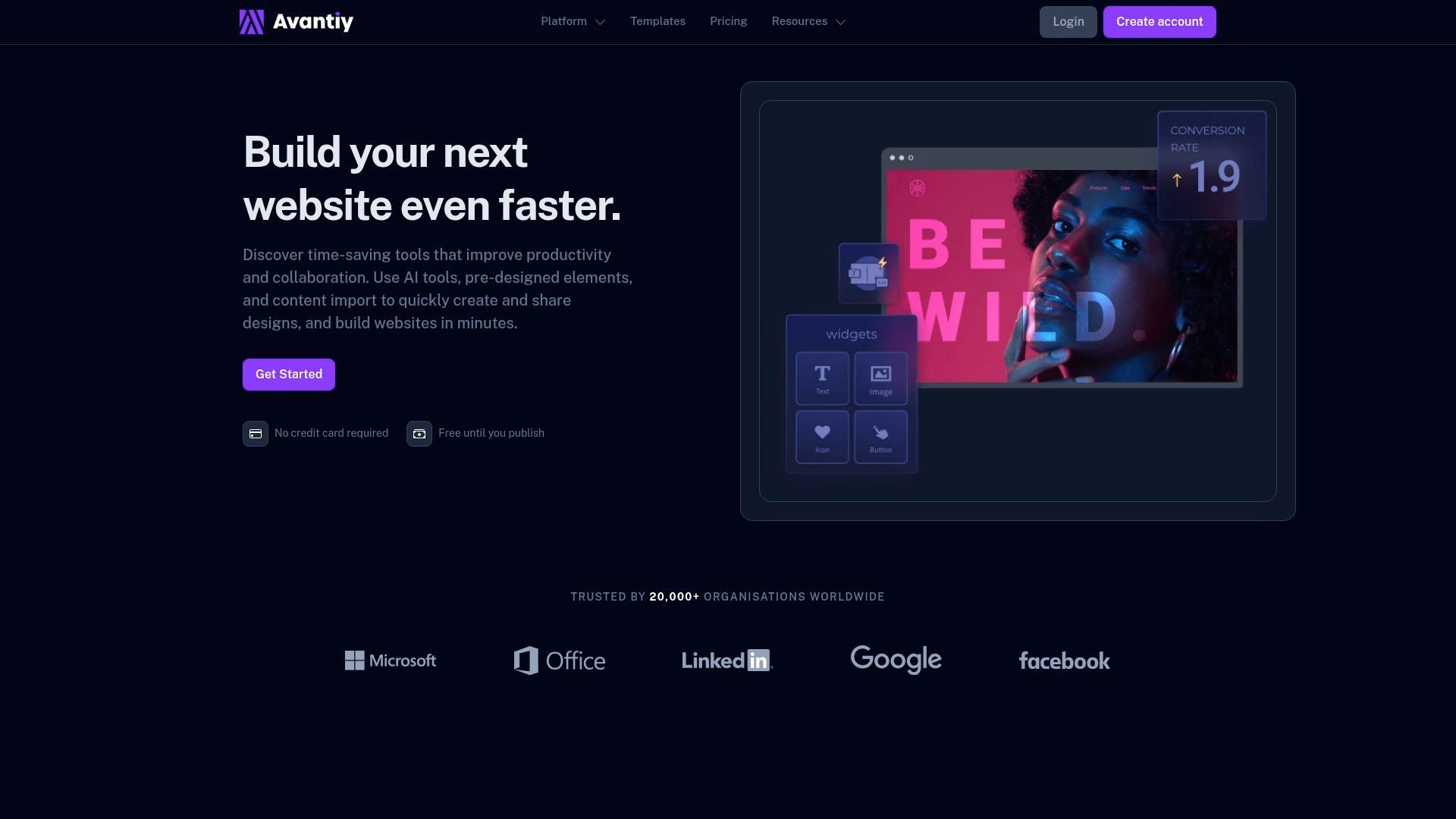
You can explore customizable website templates to find a design that fits your needs, from portfolios to online stores. Avantiy’s mobile-friendly layouts and 400+ app integrations mean you’ll have everything you need, right out of the box.
Best of all, you can build for free until you’re ready to publish. For individuals, startups, and small businesses, Avantiy offers a fast, accessible way to start using a website without any coding skills.
Best Practices and Tips for Beginners in 2025
Starting your journey with using a website can feel intimidating, but following best practices will help you stay confident, safe, and effective online. Let’s break down the essentials every beginner should know in 2025.
Keeping Your Information Safe Online
Security is a top priority when using a website. Start by creating strong, unique passwords for each account and update them regularly. Enable two-factor authentication whenever possible to add an extra layer of protection.
Be vigilant about phishing emails and suspicious links—if something seems off, don’t click. Always check for secure connections (look for HTTPS in the address bar) before entering personal information. Remember, 81% of hacking-related breaches use stolen credentials, so proactive measures are essential.
If you ever feel unsure, consult your browser’s security tools or trusted online resources. Building these habits early makes using a website much safer.
Staying Updated with Web Trends and Technologies
The digital landscape changes rapidly. Staying informed ensures you’re making the most out of using a website and its evolving features. Follow reputable tech blogs, subscribe to industry newsletters, and participate in webinars or online workshops.
Regularly check for updates in your favorite platforms to take advantage of the latest functionalities. For example, many sites introduce new privacy features or accessibility tools each year.
Did you know that 72% of professionals believe digital skills are essential for career growth? By actively learning about new trends, you’ll gain confidence and stay ahead while using a website.
Building Digital Literacy and Confidence
Digital literacy is the foundation for using a website effectively. Start by exploring different site layouts, experimenting with settings, and trying new tools. Don’t hesitate to complete online tutorials or courses—they’re designed for all skill levels.
Practice safe browsing by recognizing trustworthy sites and avoiding downloads from unknown sources. As you interact with more websites, your confidence will grow, making each experience smoother and more enjoyable.
Remember, small steps add up. Each time you try a new feature or tool, you become more adept at using a website and navigating the web with ease.
Making the Most of Your Online Presence
Maximizing your online presence involves active participation and thoughtful presentation. Engage with communities, share your content, and update your profiles regularly. Consistency is key to building trust and visibility.
Leverage networking platforms like LinkedIn to connect with others and showcase your work. For better user experience, consider following Website Navigation Best Practices to ensure your site is easy to explore and inviting to visitors.
With 84% of organizations using a website for customer engagement, adopting these strategies will help you stand out and get the most from your digital journey.
Now that you’ve got a solid understanding of what websites are, how to navigate them, and the essential features to look for, why not put your new knowledge into practice? Whether you want to share your ideas, launch an online store, or showcase your portfolio, building your own site can open up endless opportunities. With intuitive tools like Avantiy’s drag-and-drop editor and AI-powered templates, you don’t need any coding experience to get started. Ready to turn your ideas into reality and create a professional website that stands out?
Start Building Your Website Today
Start building your new website today
No credit of debit card required start building today

